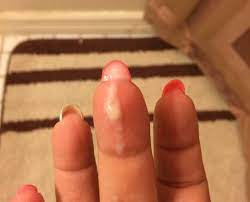 Leukorrhea refers to a thick, whitish, yellowish or greenish vaginal discharge.
Leukorrhea refers to a thick, whitish, yellowish or greenish vaginal discharge.
Leukorrhea is usually related to estrogen imbalance.
The amount of discharge may vary with vaginal infection.
Leukorrhea may disappear and reappear from time to time.
With continued leukorrhea the discharge becomes more yellow and strong-smelling.
It is usually a non-pathological symptom secondary to inflammatory conditions of the vagina or cervix.
Its presence is confirmed by finding >10 WBC per high-power field under a microscope when examining vaginal fluid.
Vaginal discharge is normal.
Changes in vaginal discharge are caused by infection, malignancy, and hormonal changes.
Physiologic leukorrhea[edit]
It is not a major issue but is to be resolved as soon as possible. It can be a natural defense mechanism that the vagina uses to maintain its chemical balance, as well as to preserve the flexibility of the vaginal tissue. The term “physiologic leukorrhea” is used to refer to leukorrhea due to estrogen stimulation.
Leukorrhea may occur normally during pregnancy, due to increased bloodflow to the vagina from increased estrogen.
Female infants may have leukorrhea for a short time after birth due to their in-uterine exposure to estrogen.
Inflammatory leukorrhea may also result from inflammation or congestion of the vaginal mucosa.
Yellow or foul smelling leukorrheaIn could be a sign of several disease processes, including a bacterial infection or STD.
After pregnancy and delivery leukorrhea accompanied by backache and foul-smelling lochia may suggest the failure of involution of the uterus to returning to pre-pregnancy size due to infection.
Wet smear, Gram stain, culture, pap smear and biopsy are suggested to diagnose a leukorrhea condition.
Leukorrhea is also caused by trichomonads, a group of parasitic protozoan, specifically Trichomonas vaginalis.
Common symptoms of this disease are burning sensation, itching and discharge of frothy substance, thick, white or yellow mucous.
Leukorrhea may be caused by sexually transmitted diseases, and treating the STD will help treat the leukorrhea.
Treatment may include antibiotics, such as metronidazole.
Other antibiotics common for the treatment of STIs include clindamycin or tinidazole.
